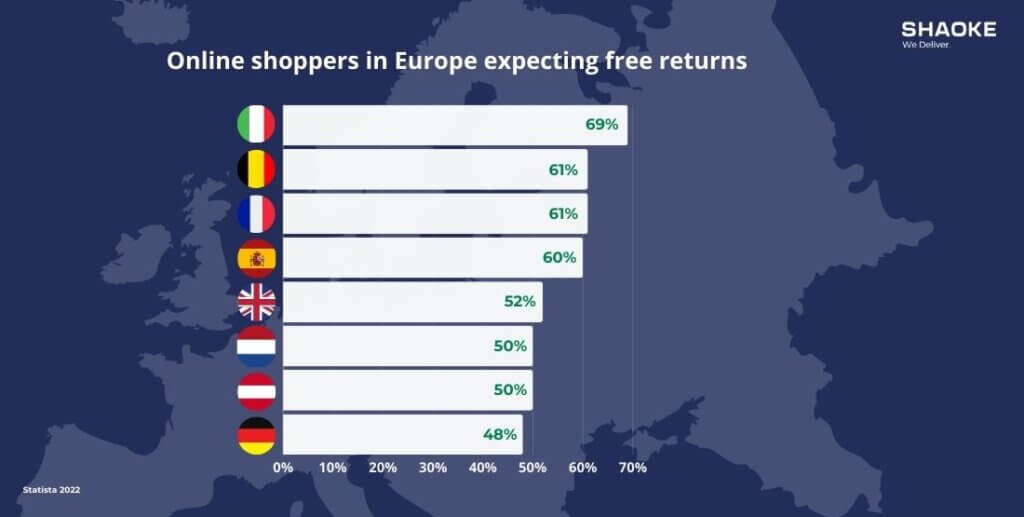
Influenced by industry giants like Amazon, a growing number of retailers recognize strategic and relaxed return policies as significant to their business. By offering more flexible return policies, retailers aim to boost sales conversions and promote customer loyalty. This is a smart move, as consumers increasingly expect hassle-free and cost-effective return options. In European countries such as Italy, Germany, and France, over 60% of consumers expect free returns.
These return policies have a big impact on how consumers shop, and return. This year has already witnessed record-high return rates. For example, returns in the UK from December 24 to January 2 were 16% higher than last year.

Reverse logistics
But what happens after products get returned by consumers? That’s when reverse logistics comes into play. Reverse logistics refers to the process of handling product returns and moving goods from the consumer back to the manufacturer or seller. It involves all the steps from when a return is started to when the retailer’s warehouse handles the product:
- Return: a customer decides to return a product and begins the return process.
- Packaging: the returned item needs to be safely packaged for transportation back to the retailer’s, or their logistics partner’s warehouse.
- Shipping: the packaged item is sent back to the retailer via shipping or courier services.
- Customer support: during this step, customers may have inquiries or require assistance regarding their return.
- Inspection: the returned product is checked to determine its condition and whether it meets the criteria for resale or needs further processing.
- Restocking, recycling or disposal: depending on the condition of the returned item, it may be restocked for resale. Items that cannot be reused or resold may be broken down for recycling or disposed of in an environmentally friendly manner.
Challenges in returns management
Despite its importance, many retailers are still not prioritizing returns management. Research by McKinsey shows that managing returns is not among the top five priorities for one-third of retailers, and one out of every four retailers struggles with effective returns management. Challenges include handling stock issues and dealing with expensive transportation fees. Neglecting proper management, however, can negatively impact your brand. The transportation costs, environmental sustainability, and brand image, as consumers are increasingly aware of how companies handle returns. To address these challenges, it is recommended to introduce measures that simplify the returns process. This includes providing pre-printed return labels or QR codes for paperless returns processing and offering multiple drop-off options, such as parcel lockers.
Partnering with a logistics company can help handle returns more effectively for retailers. These partners bring their expertise, resources, and scalable solutions, so businesses can concentrate on their main tasks with peace of mind. These partners also offer technology for tracking returns in real-time, which helps optimize operations and improve customer satisfaction at the same time. Overall, this teamwork eases the workload of returns management, cuts costs, and supports long-term success in the market.
Are you an e-commerce business struggling with handling returns? We at SHAOKE provide returns management services all over Europe. Feel free to schedule a meeting with us to explore how we can work together: contact us here.
References
McKinsey
Statista
E-commerce News Europe

